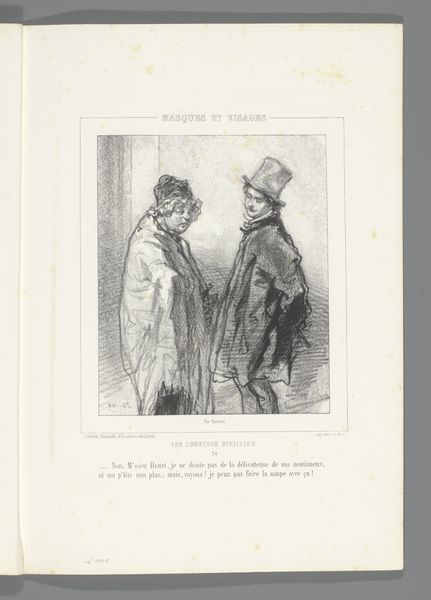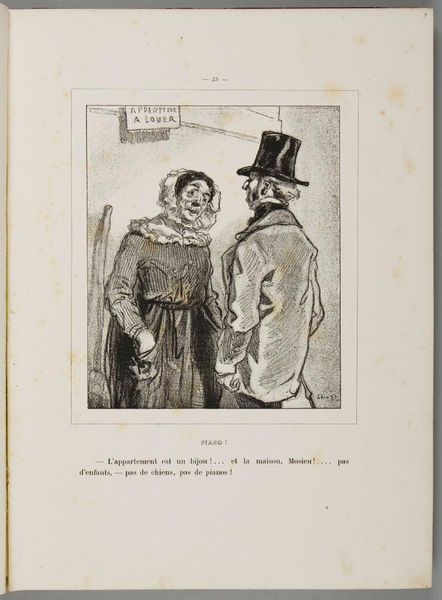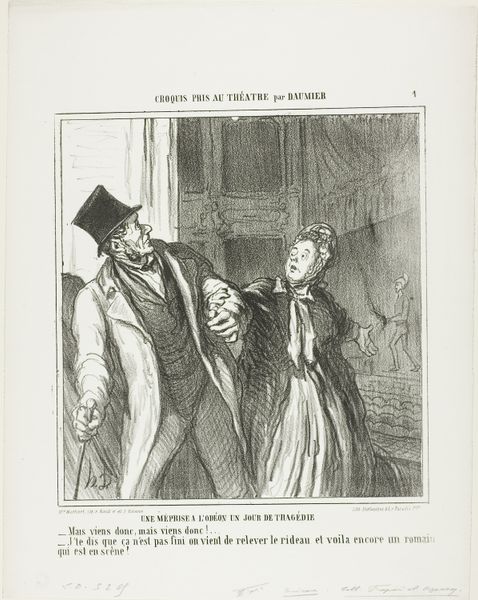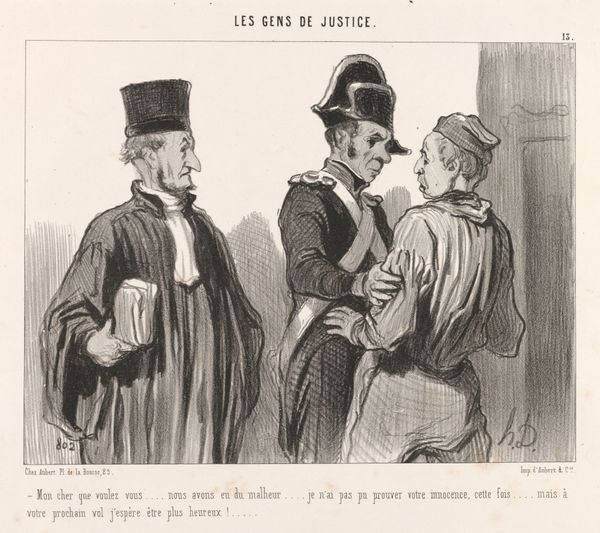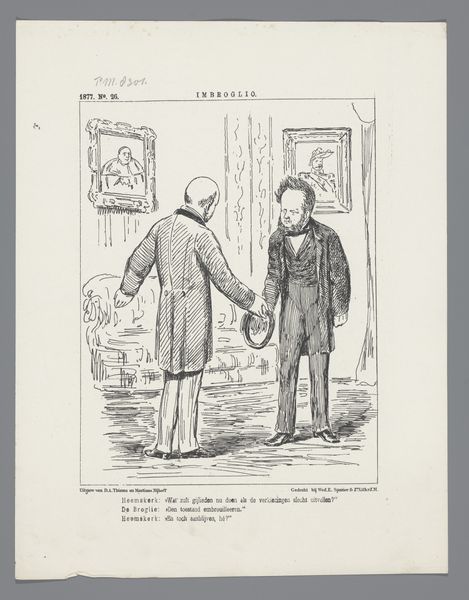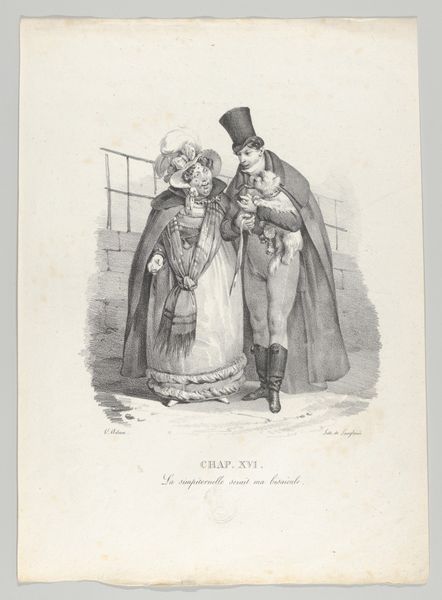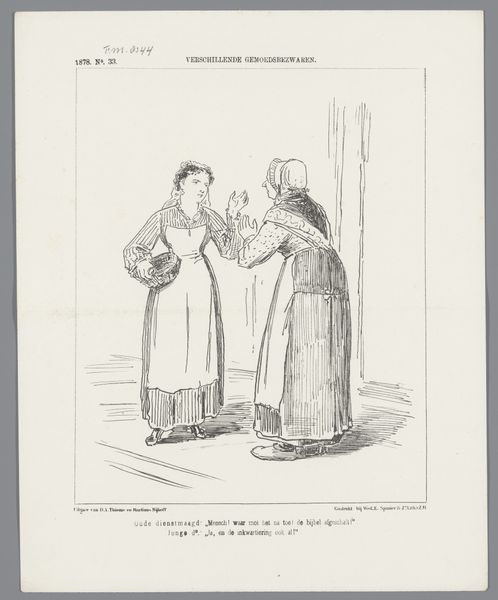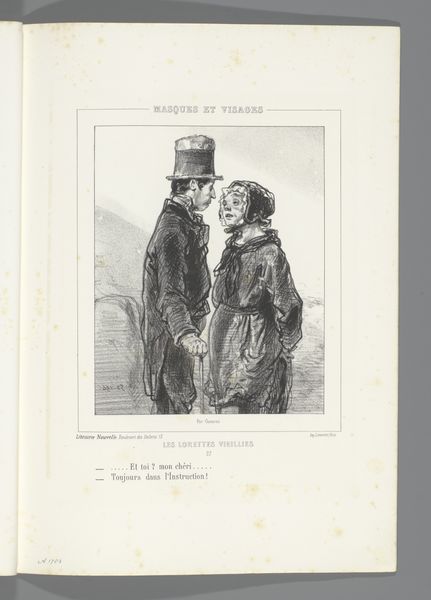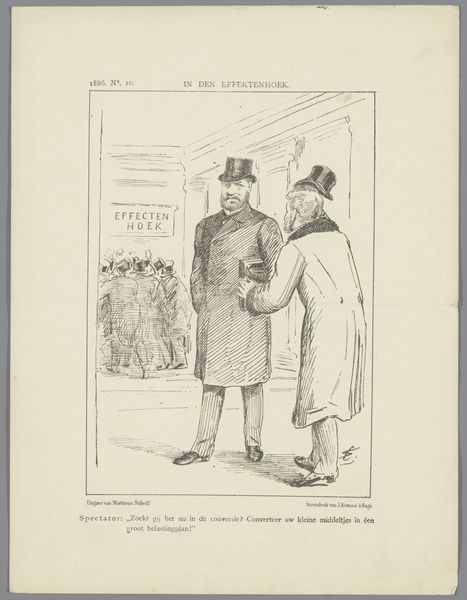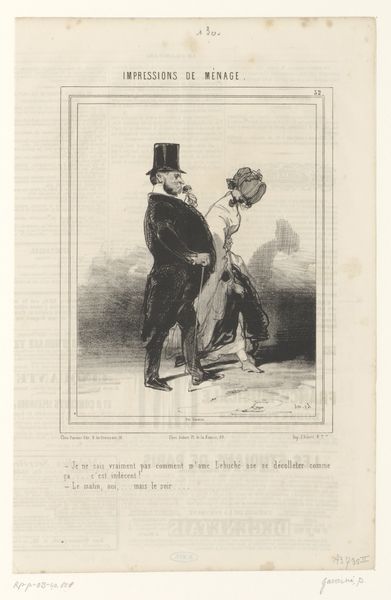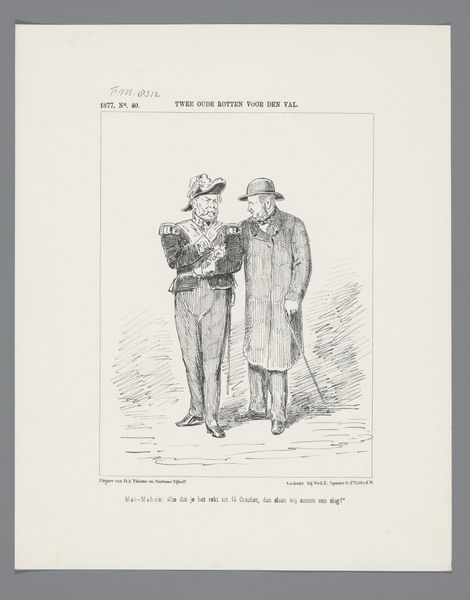
Dimensions: height 378 mm, width 275 mm
Copyright: Rijks Museum: Open Domain
This print was made by Paul Gavarni, and it shows us the world of 19th century Paris through lithography. Lithography is an interesting process. It is a printing technique where the artist uses a greasy crayon to draw an image on a stone or metal plate. The stone is then treated so that ink sticks only to the crayon marks, allowing the image to be printed. Look closely, and you can see the subtle gradations of tone achieved with this method. Gavarni was a master of this technique, using it to capture the nuances of Parisian life. With lithography, he could mass-produce his images and make them accessible to a wide audience, which really democratized art in the 19th century. The print offered social commentary, capturing the changing urban landscape and class dynamics of the city. It prompts us to consider the artist's labor, the means of production, and how these factors intersect with the artwork's meaning and cultural significance.
Comments
No comments
Be the first to comment and join the conversation on the ultimate creative platform.
